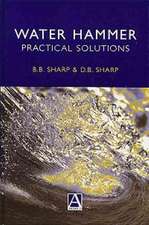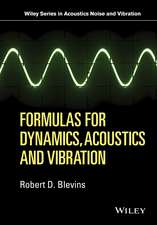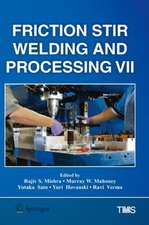Friction Stir Welding of High Strength 7XXX Aluminum Alloys: Friction Stir Welding and Processing
Autor Rajiv S. Mishra, Mageshwari Komarasamyen Limba Engleză Paperback – 13 iun 2016
Friction stir welding has demonstrated significant benefits in terms of its potential to reduce cost and increase manufacturing efficiency of industrial products in transportation, particularly the aerospace sector. The 7XXX series aluminum alloys are the premium aluminum alloys used in aerospace. These alloys are typically not weldable by fusion techniques and considerable effort has been expended to develop friction stir welding parameters. Research in this area has shown significant benefit in terms of joint efficiency and fatigue performance as a result of friction stir welding. The book summarizes those results and includes discussion of the potential future directions for further optimization.
- Offers comprehensive coverage of friction stir welding of 7XXX series alloys
- Discusses the physical metallurgy of the alloys
- Includes physical metallurgy based guidelines for obtaining high joint efficiency
- Summarizes the research and application of friction stir welding to high strength 7XXX series alloys, exploring the past and current developments in the field
Preț: 310.61 lei
Nou
Puncte Express: 466
Preț estimativ în valută:
59.44€ • 62.21$ • 49.47£
59.44€ • 62.21$ • 49.47£
Carte tipărită la comandă
Livrare economică 24 martie-07 aprilie
Preluare comenzi: 021 569.72.76
Specificații
ISBN-13: 9780128094655
ISBN-10: 0128094656
Pagini: 120
Dimensiuni: 152 x 229 x 11 mm
Greutate: 0.2 kg
Editura: ELSEVIER SCIENCE
Seria Friction Stir Welding and Processing
ISBN-10: 0128094656
Pagini: 120
Dimensiuni: 152 x 229 x 11 mm
Greutate: 0.2 kg
Editura: ELSEVIER SCIENCE
Seria Friction Stir Welding and Processing
Cuprins
1. Introduction2. Basic physical metallurgy of 7XXX alloys3. Friction stir welding – Overview4. Temperature distribution5. Microstructural evolution in various zones6. Mechanical properties7. Corrosion8. Physical metallurgy based guidelines for obtaining high joint efficiency9. Summary and future outlook10. References


















